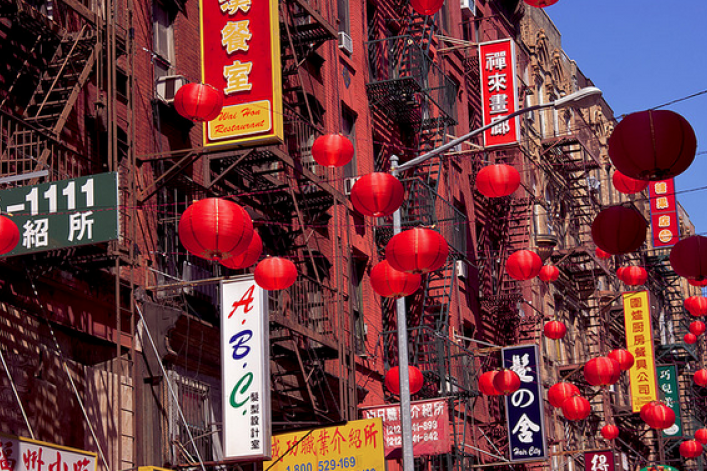How to ward off gentrification: take a page from Chinatown's playbook

Despite the march of glassy condo-hood around it in neighboring areas like Tribeca, SoHo and the Financial District, Chinatown has managed to avoid becoming like them. But how? It's not anyone's idea of cheap—at least not anymore, unless you've locked down one of its many rent-regulated apartments, that is—but the fact that it has retained so many small businesses and a large Chinese population is a feat unto itself. As it turns out, it was anything but an accident.
New York Magazine took a deep dive this week into the forces fighting for Chinatown's future, and there's a lot to be learned here for anyone interested in preserving neighborhood character in a city where ethnic enclaves come and go as fast as failed car service startups, and real estate development stays at a fever pitch. Probably the biggest factor here—admittedly, not one easily replicated by most community organizations—is that Chinese community groups bought dozens of buildings back in the 60s and 70s, which are still collectively owned, and rented out to Chinese businesses and (often elderly) residents. They could sell for tens of millions to developers, yes, but as NY Mag points out, "because dozens of people have shares in the family associations’ buildings, they’re almost impossible to sell."
Local non-profits also routinely fight tooth and nail to protect rent regulated tenants from landlord harassment, helping to collectively stem the tide of apartments going market-rate, and becoming completely unaffordable for longtime locals. Other factors working in the neighborhood's favor: Even residents who've since decamped for Flushing or Sunset Park visit regularly and patronize local businesses, which are simultaneously maintaining interest from the rest of the city (see: the increasingly hip status of century-old Dim Sum staple Nom Wah Tea Parlor). There's also a new wave of Chinese immigrants heading straight for the neighborhood, thanks in part to infrastructure set up to help them find jobs—albeit often low-paying, high-stress restaurant gigs, as chronicled in the New Yorker last fall.
The flip side of this is that unless you've got a family connection or already have an apartment, finding Chinatown digs that aren't in an ultra-expensive new development will be an uphill battle. "Chinatown is one of the hardest places to buy real estate, because Chinese people don’t move," as blogger and Chinatown Ice Cream Factory co-owner Christina Seid put it. "That’s just how we are. It’s too much trouble. Plus, why would you want to sell?"
In any case, the state of the neighborhood is an ongoing discussion among community members in Chinatown, and currently, they're staring down the same debate that's facing the rest of the city: Is it more beneficial to down-zone and increase rent regulations, or to encourage development to add more housing stock to the crowded neighborhood? Stay tuned to see which strategy wins out.
Related:
The biggest misconception about Chinatown is that it's cheap to live here
Chinatown is the center of everything—for better or worse
Neighborhood blogger Christina Seid on Chinatown's store closures and hotel frenzy






















